Attractions
Attractions In Casa Grande
Neon Sign Park
Step into a world of neon nostalgia at the multiple award-winning Casa Grande Neon Sign Park, an enchanting attraction that celebrates the vibrant history of the city. Located in Casa Grande, Arizona, this unique park showcases a collection of beautifully restored vintage neon signs, each representing a piece of the city’s colorful past. As the sun sets, the park comes alive with a kaleidoscope of glowing lights, transporting visitors on a magical journey back in time. Wander through the park and marvel at the neon artwork that once adorned local businesses and establishments, now lovingly preserved for generations to come. Casa Grande Neon Sign Park is not just a place to visit; it’s an immersive experience that captures the essence of bygone eras and reminds us of the captivating charm that neon signs brought to the city’s streets. Whether you’re a history enthusiast or simply seeking an evening stroll through the past, under the neon glow, this one-of-a-kind attraction promises an unforgettable and illuminating adventure for all. Visit Casa Grande Neon Sign Park and let the neon lights guide you through the city’s captivating past.
Link to Neon Sign Park: https://neonsignpark.com/
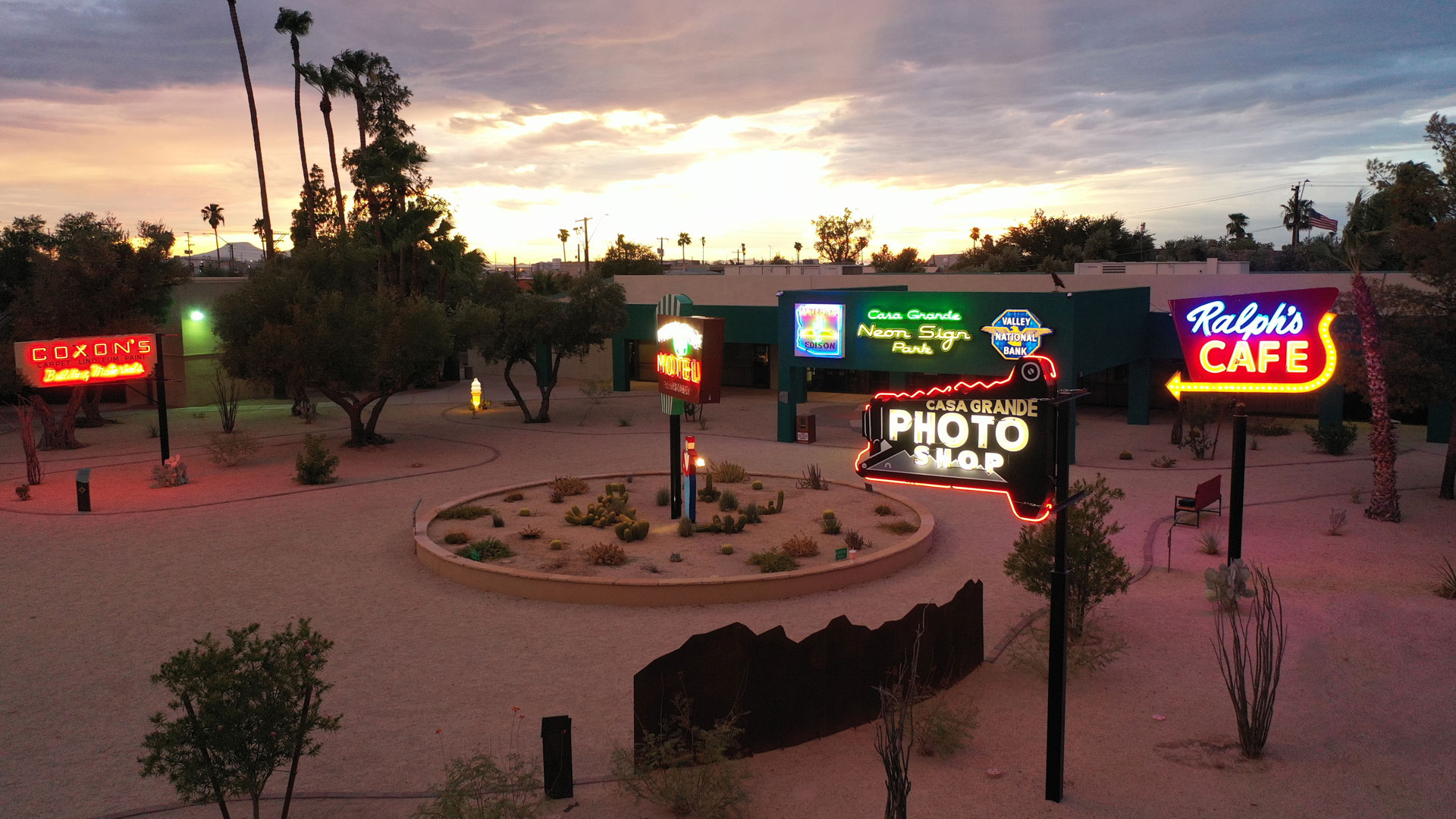
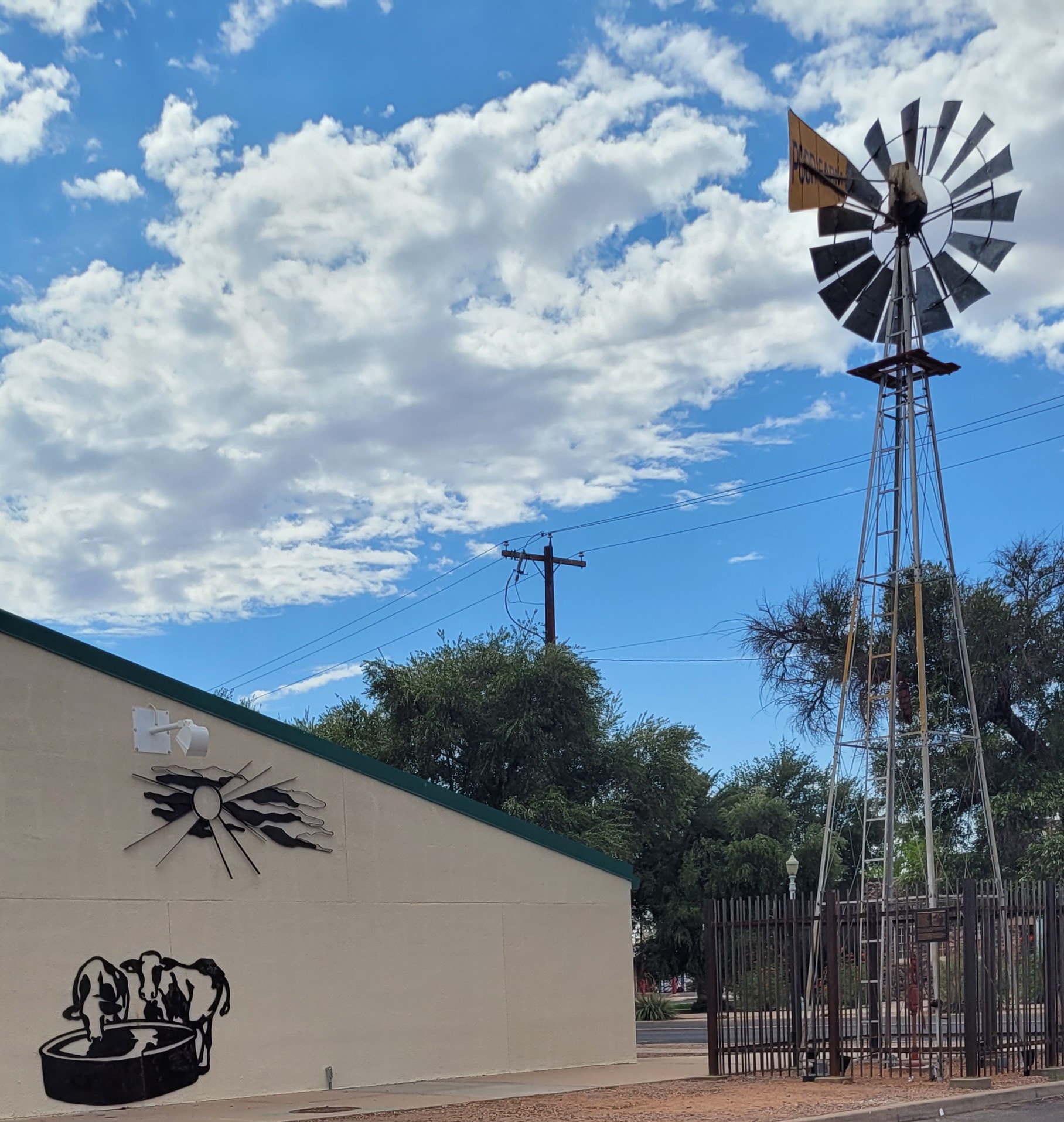
The Windmill Project
Immerse yourself in the rich history of Casa Grande, Arizona, as you marvel at the restored Stover/Samson windmill donated by the Poor family, located near the vibrant Neon Sign Park. This iconic landmark stands as a testament to the pioneering spirit of Thom Poor and offers a captivating glimpse into the past against the backdrop of the desert sunset.
Link to The Windmill Project: https://grandecentralstation.org/windmill-project/

Casa Grande Museum
Step back in time and immerse yourself in the fascinating history of Casa Grande, Arizona, at The Museum of Casa Grande. Nestled in the heart of the city, this captivating destination offers an enriching experience for visitors of all ages. With meticulously curated exhibits and artifacts, the museum presents a captivating narrative of Casa Grande’s heritage, from the ancient Hohokam civilization to its vibrant transformation as a desert community. Engaging displays and interactive programs make history come alive, providing a unique opportunity to connect with the customs, traditions, and daily life of the past. More than just a repository of artifacts, The Museum actively contributes to the community’s cultural vibrancy and serves as a source of pride for residents and visitors alike. Admission is free, welcoming all to unravel the treasures of the past and discover the captivating tales that shaped Casa Grande’s identity. Plan your visit today and embark on a fascinating journey through Casa Grande’s history at the Museum. The Museum offers unique, interesting events, activities and speakers during the fall, winter and spring, so be sure to visit the website for a schedule of upcoming events before your visit to enhance your experience.
Link to Casa Grande Museum: https://www.tmocg.org/
Historical Sites Near Casa Grande
Casa Grande’s Timeless Treasures: Unveiling Historic Sites
Step into the enchanting world of Casa Grande, where the echoes of the past come alive through its rich and fascinating historic sites. Among the city’s notable landmarks are the fieldstone structures crafted by the skilled local stonemason, Michael Sullivan, during the 1920s. These unique fieldstones, collected from the natural fields, serve as building materials and showcase the artistry of a bygone era, leaving an indelible mark on Casa Grande’s architectural heritage.
Michael Sullivan: A Master of Fieldstone Craft
In the 1920s, the talented Michael Sullivan, a local stonemason, crafted various remarkable structures using fieldstones collected from the surface of fields where they occur naturally. His artistic touch can be seen in the exquisite houses and buildings scattered throughout Casa Grande. Sullivan’s final masterpiece was the Pvt. Matthew B. Juan monument, a testament to his skill and dedication, located in the town of Sacaton, Arizona. Tragically, Sullivan passed away on February 25, 1928, while en route to Sacaton, leaving behind a legacy of timeless craftsmanship. Among the structures he built are the following:
- The Emil and Caroline Meyer House, built in 1920, and located at 222 9th St.
- The House at 320 West Eighth Street, also known as The Stone Barber Shop, was built in 1920 and is located at 320 W. 8th St.
- The Stone Bungalow, built in 1921, and located at 515 E. 3rd St.
- The Stone Warehouse, constructed in 1922, and located in the rear of the building at 119 Florence St.
- The Casa Grande Woman’s Club Building, built in 1924, and located at 407 N. Sacaton St.
- The Casa Grande Stone Church, completed in 1927, and located at 110 W. Florence Boulevard.
- The Fisher Memorial Home, erected in 1927, and located at 300 E. 8th St. (see “Notes section”).
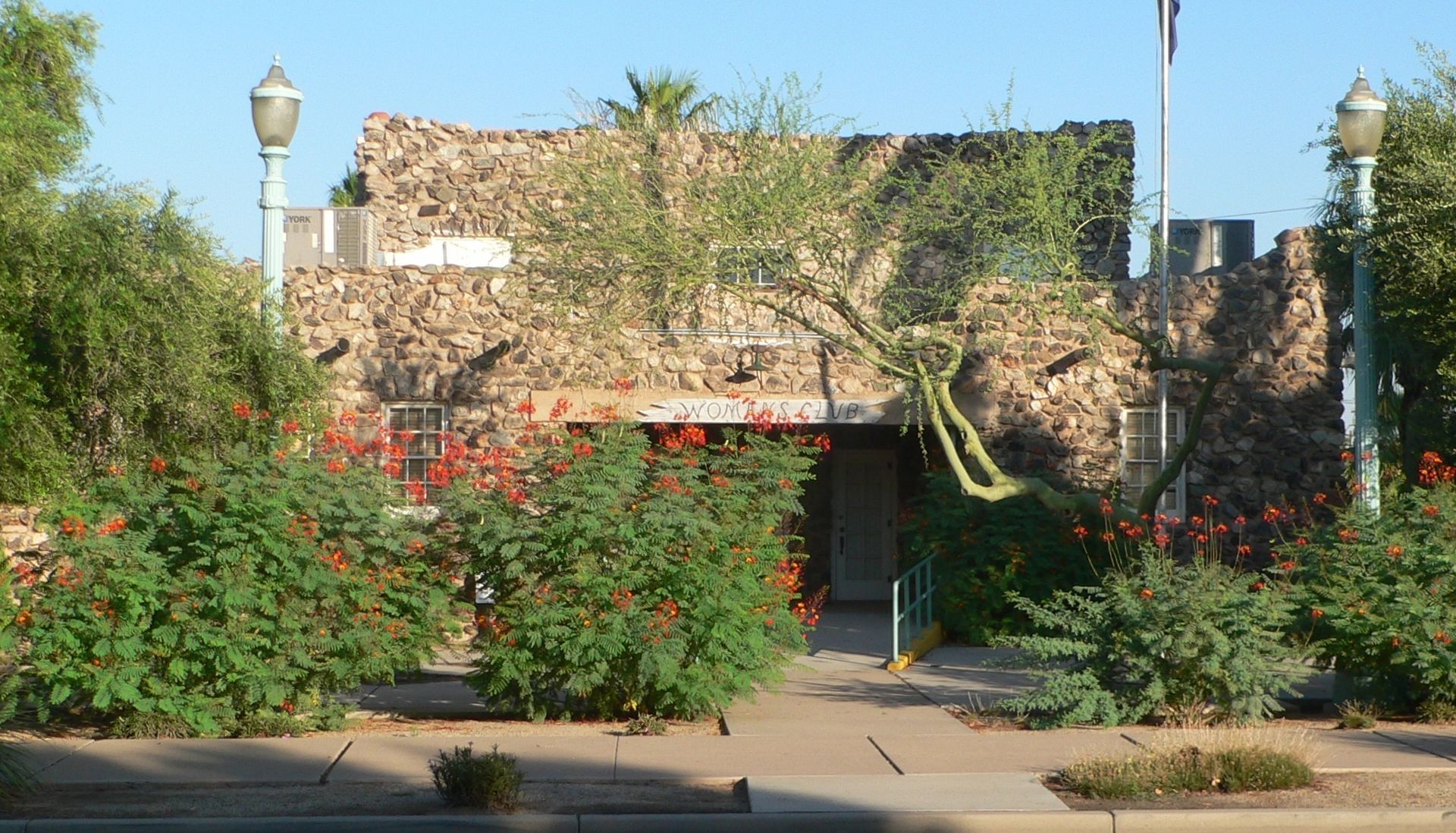
Women’s Club
The Casa Grande Woman’s Club Building, a historical treasure located in Casa Grande, Arizona, holds a rich legacy of community service and cultural significance. Constructed in 1924, this charming building stands as a testament to the pioneering spirit of the women who founded the Casa Grande Woman’s Club. With its distinctive architectural style, the structure is a striking example of Spanish Colonial Revival design, showcasing intricate detailing and stucco façade. Today, the Casa Grande Woman’s Club Building continues to serve as a focal point for various social and cultural events, providing a gathering place for community members and visitors alike. Its storied past and enduring charm make it a must-visit destination for those seeking to explore the vibrant history of Casa Grande.
Casa Grande Ruins Monument
Welcome to Casa Grande Ruins National Monument, a captivating archaeological site managed by the National Park Service in Casa Grande, Arizona. This historical treasure showcases the ancient Hohokam civilization’s legacy, featuring a remarkably preserved four-story adobe structure known as “Casa Grande” or “Great House.” Believed to have been built between 1350 and 1450 AD, the Casa Grande stands as a testament to the ingenuity and architectural prowess of its ancient inhabitants. Visitors can explore the site’s rich history through interpretive exhibits, guided tours, and self-guided walks, providing a fascinating glimpse into the lives of the Hohokam people. As one of the nation’s first archaeological preserves, Casa Grande Ruins National Monument offers an unparalleled opportunity to connect with the past and appreciate the cultural heritage of the Southwest.
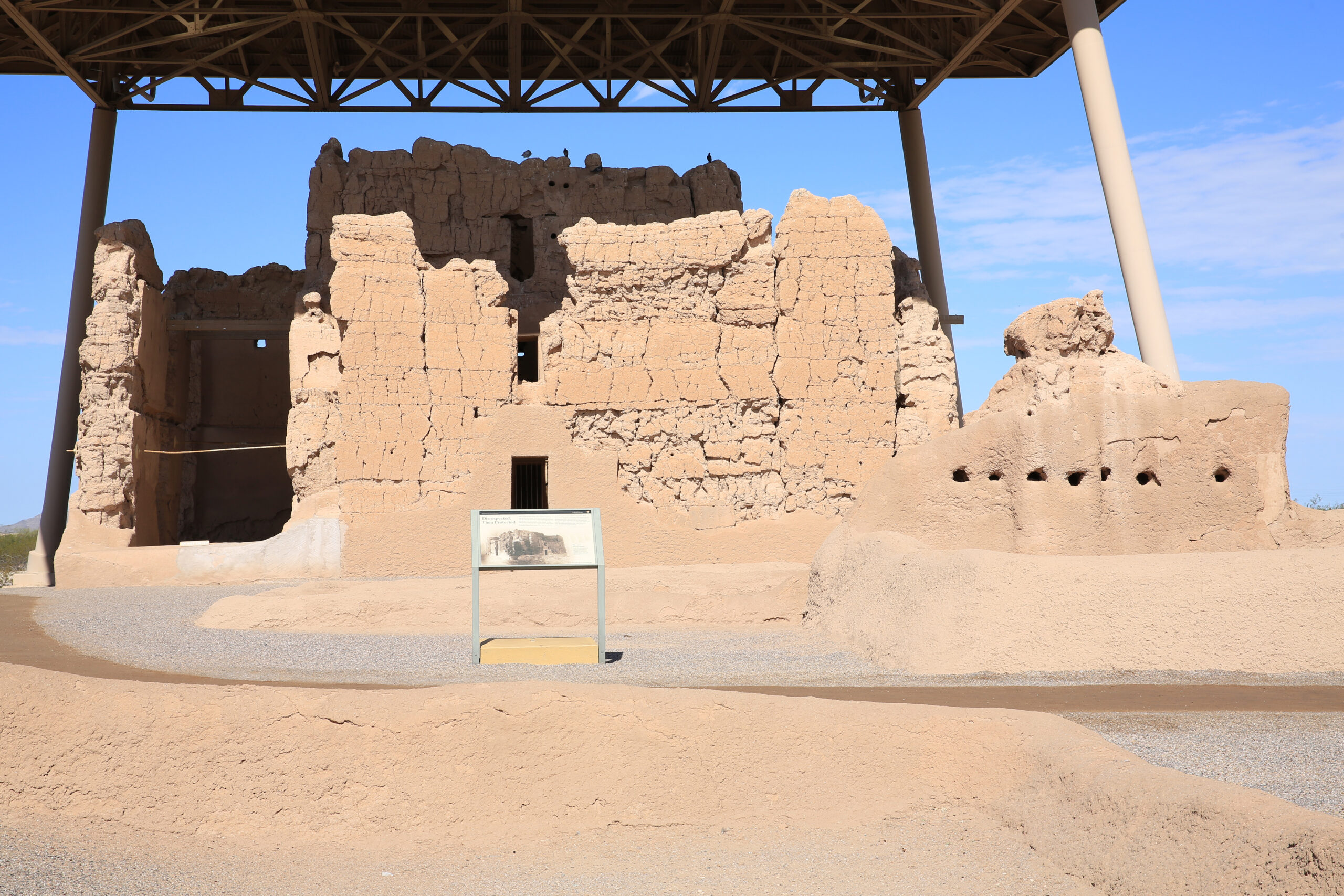
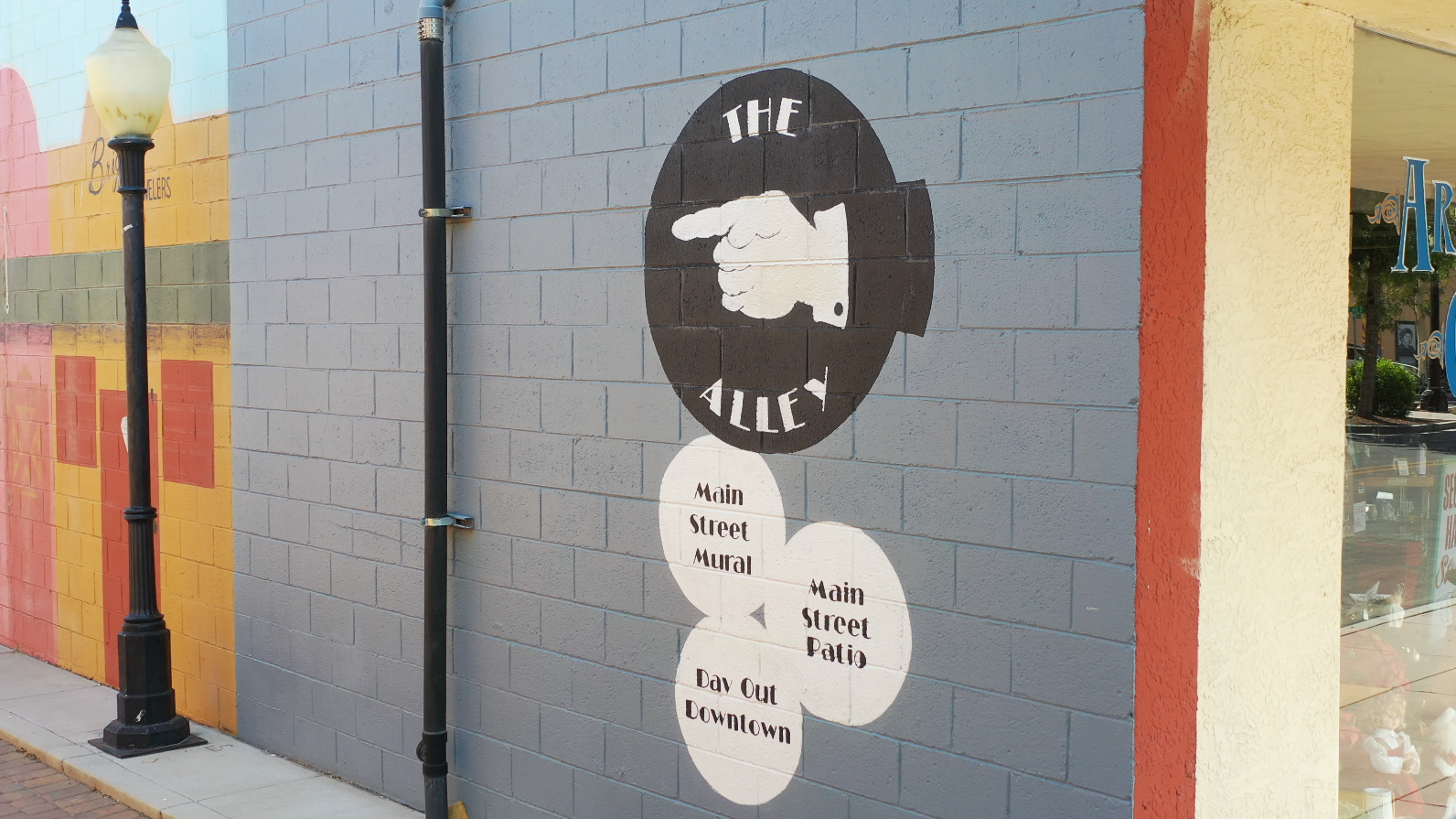
Historic Downtown
Casa Grande’s historic downtown is a compelling journey into the town’s rich past and its roots as a railroad community. Established in 1880 and named after the nearby Casa Grande ruins, this district boasts a colorful history of resilience, surviving fires and floods throughout the years. With its northwest-southeast oriented streets aligned with the railroad tracks, downtown remains geographically distinct and reflects its historic origins. The area showcases impressive architecture, including fieldstone buildings crafted by local stonemason Michael Sullivan in the 1920s and poured concrete structures by German immigrant August Wilhelm “Willie” Fricke in the 1940s and 50s. As you explore this less than three-mile walking tour, you’ll pass by original grocery stores, historic bank buildings, the renowned Woman’s Club, murals, vintage neon signs, and captivating art projects that beautifully capture Casa Grande’s vibrant heritage. Embrace the nostalgia and charm of Casa Grande’s historic downtown, where it all began.
Houses of Worship: Icons of Faith and Community:
Casa Grande boasts a rich spiritual heritage, evident in its historic houses of worship listed in the National Register of Historic Places (NRHP). The Casa Grande Stone Church, affectionately known as Heritage Hall, was built in 1927 and stands proudly at 110 W. Florence Boulevard. It has been a cherished landmark on the NRHP since 1978. Saint Anthony’s Church, an architectural marvel built in 1935, graces 215 N. Picacho St., and its accompanying rectory, located at 201 N. Picacho St., both listed in the NRHP in 1985. The First Baptist Church, established in 1938 at 218 E. 8th St., also finds its place on the NRHP, listed in 2002. Additionally, the Church of the Nazarene, constructed in 1949 and located at 305 E. 4th St., is another symbol of faith listed in the NRHP.
PLAY
STAY
DINE
EVENTS

